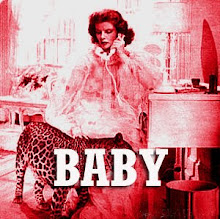quoting (non)-sound || silence
http://willschrimshaw.net/log/2008/01/nonsound_silence.html
"Ibitsu has produced another interesting post on silence and noise, despite the festive madness. What follows hopefully resembles a response to some of the ideas raised in these two posts [one] [two].
Ibitsu's silence surrounds us, it gives that which is to sound. This silence is defined by a constitutive and chaotic murmur, a minimal resonance which is the indicator of its signal capacity. This silence is noisy by virtue of its impossibility. The noise or resonance of silence exists as the obscure precursor to sound as even in the purest chaos the potential remains for signal to emerge or be drawn from internal tensions between the singularities of which this particularly quiet noise is a chaotic distribution. Actualized through contraction, anonymous vibrations which move in silence are drawn out into a field or territory in which they resound. Noises are drawn out through the dramatization of silence. Through this process the rumbling of problematic silences take form and are rendered sonorous.
For Ibitsu the body is a filtering device, and that which is filtered out is silenced:
Lyotard speaks of phenomenology, a phenomenology which situates the body as a filter, where the earth’s sonority may become music. A music is then dependant upon a silencing, a filtering of those sounds via sonorous individuation; noises rejected by the body go unheard and are subsequently rendered silent. The body is thereby a filtering device, whereby a libidinal investment silences. Here though silence remains noisy, that is, silence becomes sound unheard; a static sound poised and ready to be heard and thereby always buzzing quietly in anticipation.
And in a later post:
In hearing one sound we are thereby silencing another, unconsciously digesting various buzzes and bangs.
This filtering might also be thought of as a contraction: a process of drawing together disparate singularities at the end of which things sound. But this body which filters, contracts, knots and draws out is itself drawn out through contraction. Unconscious perceptions bare witness to this silent murmur and, through coupling one system of perception to the next, signal emerges between the elements of the perceptive complex. Sonorous individuations and territory formations occur through such perceptions, through the attempt to navigate, draw together and make sense against the backdrop of a silent and chaotic murmur.
The paradoxes of silence that Ibitsu discusses point to its impossibility and to the fact that the only silence is one which can only be thought. The ideal events of silence flash beneath the noise of all that is audible, they are that which has filtered out or evaded contraction and appear only after determination and terrirotialization. It is, however, only beyond the perplication and contraction which progresses to audibility that silence can be identified as an indicator of the chaotic murmurs from which sound was drawn. Only in the fold from which the subject springs do we find a glimmer of silence beneath the noise of all that resounds, a silence that, as Cage showed, marks the purest stamp of its own impossibility as well as that of the self and the ego. This silent self asserts its creative power over the tiny murmurs of matter through the hylomorphic assertion of form.
Silence is impossible, the problem it poses is a matter of making inaudible forces audible:
The material is there to make forces audible that are not audible in themselves, such as time, duration and even intensity. The material-force couple replaces the matter-form couple... Music is thus no longer limited to musicians to the extent that sound is not its exclusive and fundamental element. Its element is all the non-sound forces that the sound material elaborated by the composer will make perceptible, in such a way that we can even perceive the difference between these forces, the entire differential play of these forces (Two Regimes of Madness, 160).Deleuze's non-sound (and Ibitsu's silence) is not silent but inaudible, it is not a silence in opposition to sound but the positive (non)-sound of a problematic field which exceeds perception."
I think I agree, silence is impossible...its one of the big jokes...I'm interested in turning the ear eye and body, and through them the limbs of the pen/brush/tongue to vibrate just that bit closer to it though. That un-space. Michel Serres in his book Genesis is a good one for exploring this frame. I think it something about undoing the name of things for sure...first step that why my writing is so weird...I really am committed to writing more of what I'm temporarily (at least) thinking on her in the future...













No comments:
Post a Comment